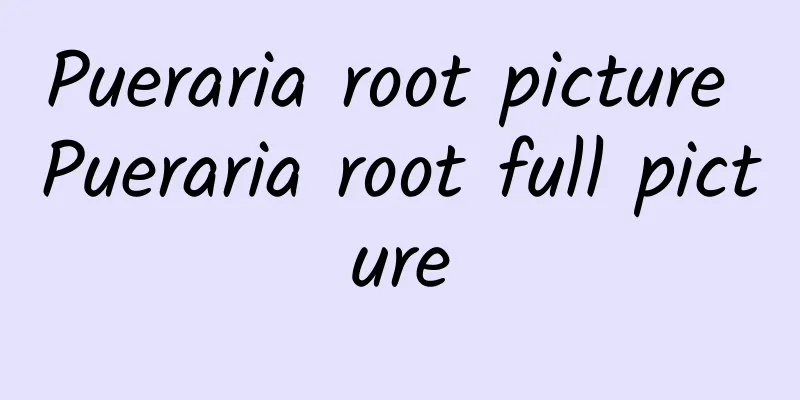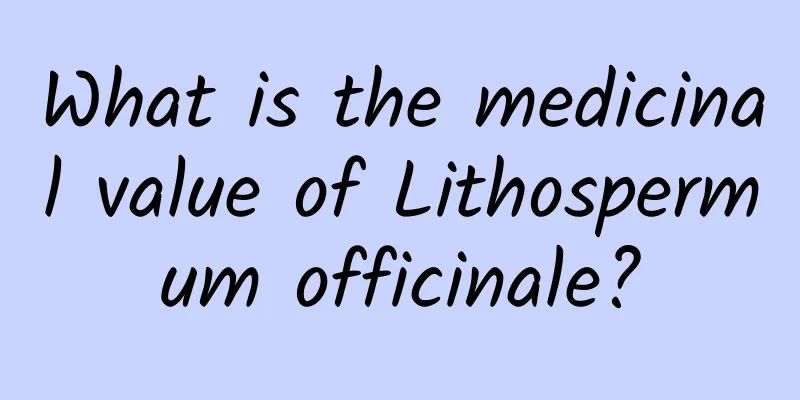Pueraria root picture Pueraria root full picture

|
Poria cocos is a commonly used Chinese medicine and is listed as a medium-grade medicine in Shennong's Herbal Classic. The product is divided into two types: Pueraria lobata and Northern Poria cocos. Poria cocos is an antipyretic drug, and its key functions include relieving muscles and reducing fever, promoting fluid production and quenching thirst, and nourishing tendons and meridians. So what does Pueraria root look like? Let us learn more about Poria cocos based on the following Pueraria root pictures. Other names: sweet kudzu root, pink kudzu root. Source: The dried roots of Pueraria, a perennial dead leaf herbaceous vine of the Leguminosae family. Natural or cultivated. Origin: The main producing areas of Pueraria lobata are Guangxi Province and Guangdong Province. Commonly seen in cultivated varieties. The main production areas of Northern Poria cocos are Hunan Province, Hubei Province, Zhejiang Province, Henan Province and other places. All are natural. Characteristics identification: Pueraria root: The tuber is cylindrical or cut into small pieces, sometimes with residual dark brown epidermis visible, with multiple obvious veins and obvious vein ring marks on the cross section. The whole body is snow-white or yellow-white, powdery. It has a faint smell and tastes slightly bitter and sour. It is preferred to have white color, large frosting and fine chemical fiber. Northern Poria cocos: beige, powdery, and has strong chemical fiber properties. Poor quality. Main ingredients: flavonoids, polysaccharides (including Poria flavonoids, puerarin, soy flavonoids, etc.), cassava starch, etc. Efficacy and function: relieves muscles and reduces fever, promotes the production of body fluids and quenches thirst, and nourishes tendons and meridians. Its basic principles are: 1. Reduce fever. Clinical trials have confirmed that it has a powerful antipyretic effect. 2. Expand the coronary arteries. Introducing total flavonoids of Poria cocos into the coronary artery of anesthetized dogs has a significant effect in dilating the coronary artery, and intravenous injection also has a certain effect. Experiments have also confirmed that Poria cocos has a protective effect against subacute myocardial ischemia caused by posterior pituitary hormone. 3. Increase cerebral blood volume. In animal experiments, injection of Poria flavonoids into the common carotid artery can cause cardiovascular and cerebrovascular dilation and increase cerebral blood volume. Poria flavonoids can also improve cerebral blood volume in patients with hypertension. In addition, clinical observations have shown that it may have astringent, anti-inflammatory and muscle spasm-relieving effects. Chinese medicine preparation: cut into slices or blocks and used raw. Poria cocos effects: sweet, spicy, and neutral. Meridians: Enters the stomach and intestines meridian. The efficacy and function of Pueraria root Function: Reduce fever, promote salivation and quench thirst. "For treating muscles and replenishing deficiency, use Ligusticum chuanxiong first, followed by Bupleurum chinense," see "Ode to Medicinal Properties". Indications: External symptoms include fever without sweating, stiff neck and head pain, fever symptoms include dry mouth, thirst quenching, macules and rashes that do not clear up, and diarrhea due to spleen deficiency. Clinical medical application: 1. Used to replenish deficiency. It is most suitable for those with superficial symptoms and atrophy and tension of the neck and back muscles (the so-called "neck and back stiffness" or "neck and back stiffness", such as influenza. Because Poria can relieve tension in the neck and latissimus dorsi muscles and has the effect of reducing fever, it is often combined with ephedra, cinnamon twigs, etc., such as Gegen Decoction. 2. Used to promote salivation and quench thirst. Through the antipyretic effect, the body's water consumption is reduced, thereby achieving the purpose of promoting body fluid and quenching thirst. It is most suitable for use when dry mouth without sweat is caused by wind-cold, wind-heat and fever. 3. Used to treat diarrhea. It is suitable for the treatment of heat diarrhea (approximately equivalent to acute enteritis and bacterial dysentery) because of its astringent and anti-inflammatory effects. It is often used with heat-clearing drugs such as Bupleurum and Scutellaria, such as Poria Chaihu Huanglian Decoction. If it is due to spleen deficiency diarrhea, you can add stewed Poria cocos to the prescription for nourishing the stomach and intestines, which will have a certain effect on improving the effect of treating diarrhea. 4. Used to clear rash. Must be used together with Cimicifuga. 5. Used to treat high blood pressure. It has a good effect on improving symptoms such as headache, dizziness, stiff neck, tinnitus, numbness of limbs, etc., but its blood pressure lowering effect is not obvious and must be used in conjunction with antihypertensive drugs. 6. Used to treat coronary heart disease. Because it has the effect of dilating the coronary arteries, Pueraria slices are effective in relieving angina pectoris and improving electrocardiogram examinations. 7. Used to treat early-stage sudden deafness. Pueraria root tablets have a certain effect on neurosensory hearing loss caused by vasospasm in the ear canal. Dosage: 6-4g, the daily amount of total flavonoids of Poria cocos is about 100-300mg, taken in 2-3 times. Prescription examples: 1. Ge Gen Tang (Treatise on Febrile Diseases): 6g of Poria, 4.5g of Ephedra, 9g of Red Peony Root, 4.5g of Cinnamon Twig, 9g of Sliced Ginger, 3g of Licorice, and 4 Red Dates, decocted in water and taken orally. 2. Poria, Bupleurum and Coptis Decoction (Treatise on Febrile Diseases): Poria 9g, Bupleurum 9g, Scutellaria 6g, Licorice 3g, decocted in water and taken orally. 3. Poria flavonoid tablets (Beijing Coronary Heart Disease Collaborative Group): One tablet contains 100 mg of Poria total flavonoids. Take it orally 3 times a day, 1 to 1 tablet each time. The treatment course is 4 to 12 weeks, to treat angina pectoris. |
<<: Ligustrum lucidum damages the liver
>>: What does saffron look like?
Recommend
What foods are incompatible with red ginseng?
Red ginseng is a common Chinese medicinal materia...
If you pinch the back of a cat's neck, will it be "acupunctured"?
Nowadays, there are more and more cat owners who ...
The stench is so strong that even butterflies and bees are horrified. How domineering is the Rafflesia?
In the Pokemon game, there is a Pokemon that emit...
The efficacy and function of Hemicapsule
Semi-capsular Moss is a very common Chinese medic...
What are the effects of Laihama grass?
Toad grass is also called toad grass because the ...
A Zhejiang woman ate a poisonous conch that looked real, causing her heart to stop beating! How can we tell the difference?
On June 9, Ms. Zhang, a 51-year-old woman engaged...
The efficacy and function of ramie flowers
Many people are not very clear about ramie flower...
What are the effects of soaking Ophiopogon japonicus in water?
People often use Ophiopogon japonicus to make tea...
Would you drink beer brewed with toilet flushing water?
Recently, Singapore, which has always paid attent...
What to do if the bedridden elderly have phlegm that cannot be discharged?
For the elderly, if they rest in bed, their body ...
China Express has added a new delivery address - space! What is so special about the Tianzhou spacecraft?
Tianzhou spacecraft publicly "collects items...
The efficacy and function of Melaleuca oil
Many people are not very clear about melaleuca oi...
The efficacy and function of noon tea
Noon tea is a common medicinal ingredient in trad...
The efficacy and function of Huangshizhi
Huangshizhi is a kind of traditional Chinese medi...









